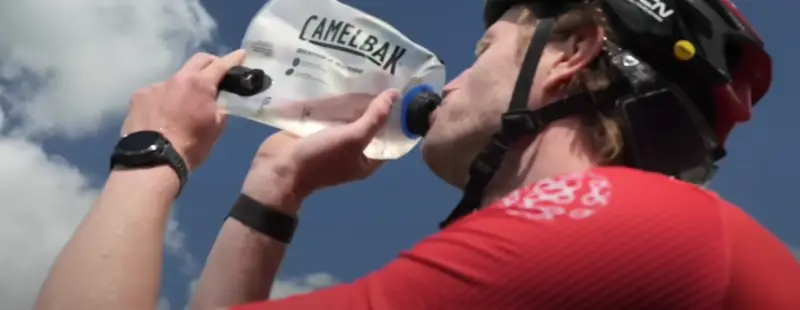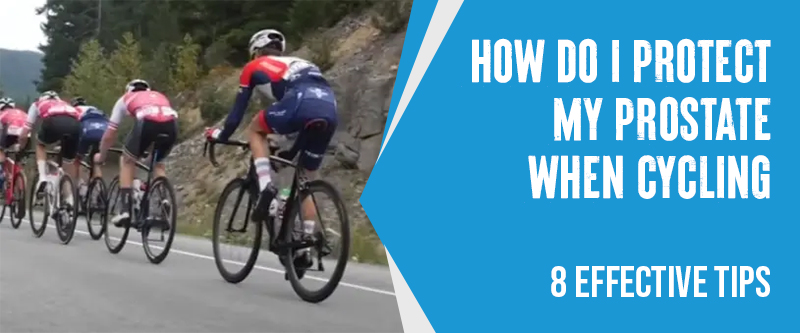Riding a bicycle with an uncomfortable seat can result in prostatitis, an inflammation of the prostate gland. The irritation caused by cycling, combined with the aging process, can cause discomfort ranging from moderate to severe and increase the risk of inflammation.
To protect cycling-related prostatitis, use a male-specific bike seat, tilt the seat slightly forward, and stand on the pedals for a few minutes every 15 minutes.
It’s also essential to ensure a proper bike fit, use a comfortable saddle, and take regular breaks to relieve pressure and protect your prostate while cycling.
In this blog post, we will explore top-notch strategies for ensuring your cycling journey remains fun, fit, and, most importantly, safe for your prostate when cycling.
How Do I Protect My Prostate When Cycling: 8 Effective Tips

While cycling is a great way to stay active and enjoy the outdoors, but for men, it’s essential to consider the impact on prostate health. Prolonged cycling, especially on ill-fitted bikes or with improper gear, might lead to prostate issues. To ensure your cycling experience remains enjoyable and safe for your prostate, here are some essential tips to protect this vital part of your body:
Choose a Bike That Fits Properly
Prostate health begins when cycling, which is choosing a bike that fits you properly. To maximize comfort, it is essential to minimize pressure on the prostate area. An ill-fitted bike can unnecessarily pressure your perineum, causing discomfort and potentially affecting your prostate. Ensure your bike’s size, seat height, and handlebar position are adjusted to suit your body proportions.
✔ Top Pick: Adjustable Road Bike
Many people use an adjustable road bike to ensure proper fit and reduce pressure on sensitive areas.
Invest in The Right Saddle
Your bike’s saddle (or seat) plays a significant role in your comfort and, more importantly, in protecting your prostate. Find a saddle that reduces pressure on the perineum (the area between the anus and the genitals). Consider investing in a saddle designed specifically for male anatomy and prostate protection. These saddles often feature a center cutout or groove to relieve pressure on the perineum area.
Wear the Right Cycling Shorts
The right cycling shorts look good and serve a crucial function in protecting your prostate. Opt for padded cycling shorts that provide cushioning and reduce friction during your rides. The padding can help absorb shock and minimize pressure on your sensitive areas.
Maintain Proper Body Positioning
Maintaining the correct body positioning while cycling is essential for prostate protection. Keep your back straight, shoulders relaxed, and elbows slightly bent. Try not to arch your back or lean too far forward excessively, as this can increase pressure on your perineum and prostate.
✔ Top Pick: Ergonomic Handlebar Grips
Many people use ergonomic handlebar grips to maintain proper posture and reduce strain on the back and prostate.
Ensure Proper Saddle Positioning
Besides having the right saddle, it’s crucial to position it correctly on your bike. By maintaining proper posture, you can avoid unnecessary strain on your prostate. The saddle should be level, not tilted too far forward or backward. Adjust the height so your legs bend slightly at the pedal stroke’s bottom. Proper saddle positioning can help distribute your weight more evenly and reduce pressure on your prostate.
Take Occasional Breaks
Long rides can exhilarate, but they can also be hard on your body, including your prostate. To protect your prostate health, take occasional breaks during your cycling sessions. Use these breaks to stand up, stretch, and allow blood flow to return to your perineum area. Taking a break every 30-60 minutes is recommended, especially on longer rides.
Rehydrate

Health including prostate health, depends on hydration. If you’re dehydrated, you’ll have concentrated urine, which will irritate your bladder and prostate. Remember to drink adequate water before, during, and after your rides to stay hydrated and support your prostate health.
✔ Top Pick: Insulated Water Bottle
Many people use an insulated water bottle to stay hydrated and support prostate and bladder health while cycling.
Don’t Over-Cycle
While cycling is a fantastic form of exercise, excessive cycling can be detrimental to the prostate. Avoid excessive cycling, especially if you feel discomfort or pain in your pelvic region. Listen to your body, and don’t push yourself beyond your limits. Balance your cycling routine with rest days and other forms of exercise to support your overall well-being.
Conclusion
Cycling is an unmatched experience with countless benefits. Although it poses particular risks for men’s prostate health, with the proper knowledge and precautions, you can pedal away those concerns. You should choose a bicycle that fits you properly, invest in the correct saddle and cycling shorts, maintain proper body positioning, and take regular breaks.
You can safeguard your prostate while you continue your cycling adventures. Remember, balance is crucial, and listening to your body is the best way to enjoy your rides while also protecting your prostate. So, gentlemen, keep those wheels spinning, stay hydrated, and ensure you’re safeguarding your prostate health as you conquer the open road.
FAQs
How Often Should I Take Breaks While Cycling To Protect My Prostate?
Take abrupt breaks every 30 minutes to an hour, depending on how long and how tough your ride is. These breaks can normalize blood flow, relieving pressure on the prostate.
Is Rice Good For The Prostate?
Whole grains like oats, brown rice, and quinoa and legumes like lentils and beans are the best sources of dietary fiber. A diet high in fiber may help regulate bowel movements and reduce prostate problems.


